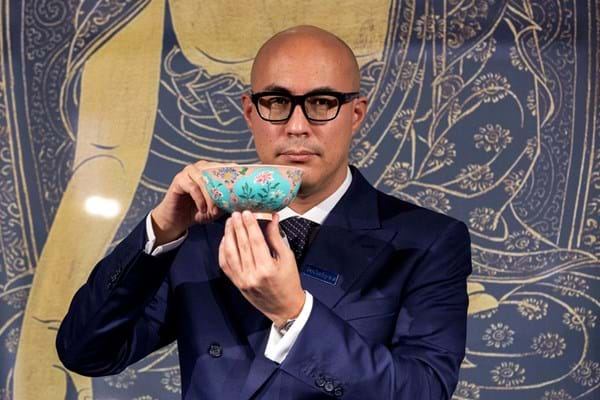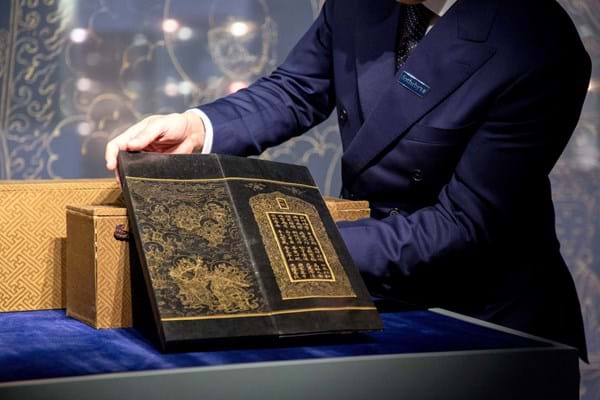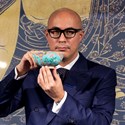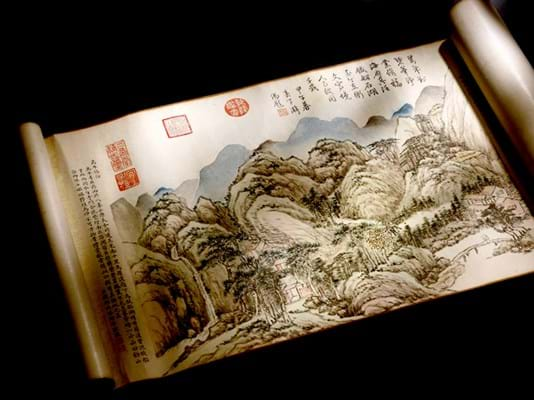A highlight of its April 3 auction was the so-called Lost Wisdom Sutra, a historical relic of the Xuande (1426-35) period.
From a Swiss private collection, it comprises ten albums of the Prajnaparamita Sutra [Perfection of Transcendent Wisdom], created by Imperial order and inscribed by the Emperor’s appointed monk Huijin. Originally recorded in a Kyoto aristocratic collection in 1917, it remained out of sight until the Ming exhibition at the British Museum in 2014.
The winning hammer price was HK$210m (£19.1m), the sum also afforded a puce-enamel falangcai bowl with yuzhi mark made for the personal use of the Kangxi emperor. The 53/4in (14.5cm) diameter enamelled bowl once belonged to the collector Henry M Knight and can be traced back to Shanghai in 1930. It came from the collection of the Idemitsu Museum of Arts, Tokyo and was last on the market in 1986. The bidding, marshalled by Sotheby's auctioneer Henry Howard-Sneyd, came from two phones manned by Nicholas Chow, deputy chairman for Sotheby's Asia and Kevin Ching, the firm’s Asia CEO. The pre-sale expectations were around HK$200m.
The longest bidding contest of the series was reserved for a handscroll by the Imperial court painter Qian Weicheng, which re-emerged from a private European collection after a hundred years. The artist was a favourite of the Qianlong Emperor and the Ten Auspicious Landscapes of Taishan is inscribed with ten poems written in appreciation by the Emperor. Originally kept in the Ningshou Gong of the Forbidden City, it was given by the last Emperor Puyi to his younger brother Pujie in the early 1920s. After a 40 minute battle and over 100 individual bids, it took HK$128.5m (£11.7m).













